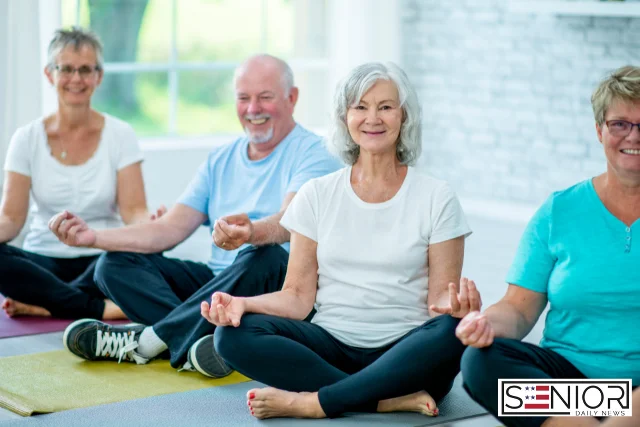Exploring Different Meditation Practices for Seniors

As we grow older, finding moments of peace and clarity becomes more important than ever. That’s where Meditation Practices can make a profound difference. For seniors, meditation offers a gentle yet powerful way to manage stress, improve mental focus, and enhance emotional well-being. Whether you’re new to the idea or looking to deepen your routine, exploring different Meditation Practices can open the door to better health and a more balanced life. The best part? You don’t need to be flexible or spiritual—just willing to sit, breathe, and be present. Let’s explore which styles work best for aging minds and bodies.
Contrary to common belief, meditation isn’t reserved for yogis or monks sitting cross-legged on mountaintops. Today, seniors across the United States are discovering that there are many types of meditation suited to their lifestyles, energy levels, and personal needs. From guided meditations to mindful walking, the variety ensures that there’s something for everyone.
In this article, we’ll explore different meditation practices that are particularly beneficial for seniors. We’ll also offer tips on how to get started, stay consistent, and reap the rewards of this gentle yet powerful habit.
Why Meditation Matters for Seniors
Let’s begin with the basics. Why are meditation practices especially valuable during the senior years?
1. Supports Mental Health
Meditation can reduce symptoms of anxiety and depression, both of which are common among older adults. The quiet, introspective nature of meditation helps calm racing thoughts and bring focus to the present moment.
2. Improves Sleep
Many seniors struggle with falling or staying asleep. Meditation relaxes the nervous system, which can make it easier to fall asleep and improve sleep quality.
3. Enhances Memory and Focus
Some studies suggest that regular meditation may help slow age-related cognitive decline. By training the mind to stay focused, seniors may experience better attention spans and short-term memory.
4. Reduces Stress and Lowers Blood Pressure
Deep breathing and focused awareness lower stress hormones, which in turn may help reduce blood pressure and support heart health.
5. Encourages Emotional Well-being
Meditation cultivates gratitude, patience, and compassion—qualities that promote a positive outlook on life, which is important for aging gracefully.
1. Mindfulness Meditation
Mindfulness is one of the most accessible meditation practices for seniors. It involves observing thoughts, feelings, and sensations without judgment.
How to do it:
Find a quiet space, sit comfortably, and focus on your breath. When your mind wanders (which it will), gently return to your breathing. Start with 5–10 minutes and work your way up.
Why it’s great for seniors:
Mindfulness is gentle, doesn’t require any special equipment, and can be done sitting in a chair or lying down. It’s particularly helpful for managing chronic pain and emotional ups and downs.
Bonus tip: Try mindful eating or drinking tea—focus on the flavors, textures, and sensations as part of your daily routine.
2. Guided Meditation
Guided meditation is perfect for seniors who prefer a soothing voice to walk them through the process. It’s especially helpful for beginners who find it hard to sit in silence.
How to do it:
You can find free guided meditations on YouTube, apps like Insight Timer and Calm, or CDs and DVDs from local libraries. Simply sit back, relax, and follow the voice.
Why it’s great for seniors:
It reduces the pressure of “doing it right.” Guided meditations offer direction and structure, which can ease the mind and help beginners feel more confident.
Bonus tip: Look for meditations specifically created for seniors or older adults to ensure the content is relevant and appropriately paced.
3. Loving-Kindness Meditation (Metta)
This form of meditation focuses on cultivating compassion—toward yourself and others. It’s particularly healing for seniors who may be dealing with grief, isolation, or strained relationships.
How to do it:
Sit comfortably and silently repeat phrases like “May I be happy, may I be healthy.” Then extend those wishes to others: family, friends, and even people you’ve had challenges with.
Why it’s great for seniors:
It helps shift the focus from loss to love and connection. Practicing compassion can increase feelings of joy and emotional warmth.
Bonus tip: You can combine this practice with journaling by writing down names and loving thoughts.
4. Body Scan Meditation
Body scan meditation helps seniors connect with their physical body in a relaxed, nonjudgmental way. It’s excellent for increasing body awareness and reducing pain or tension.
How to do it:
Lie down or recline comfortably. Focus your attention slowly from your toes up to the top of your head, noticing each area. If you feel tension, breathe into that spot and allow it to relax.
Why it’s great for seniors:
It encourages relaxation, reduces muscle tension, and promotes gentle healing. It’s also useful for those with limited mobility.
Bonus tip: Use a soft voice recording to guide your scan, especially when lying in bed before sleep.
5. Chair Meditation
Not everyone wants to sit on the floor for meditation. Chair meditation offers a comfortable and accessible way to experience mindfulness without putting stress on the body.
How to do it:
Sit upright in a sturdy chair with your feet flat on the floor. Rest your hands in your lap, close your eyes, and focus on your breathing. Gently bring your attention back if your mind drifts.
Why it’s great for seniors:
It’s easy on the joints and requires no special gear. Seniors with arthritis, back issues, or joint stiffness can practice comfortably and safely.
Bonus tip: Add calming background music or nature sounds to enhance the experience.
6. Walking Meditation
If you find sitting still uncomfortable or prefer being outdoors, walking meditation might be the perfect solution. It combines movement with mindfulness.
How to do it:
Find a quiet, safe place to walk slowly—like a garden or a park trail. Focus on each step, the feeling of your feet touching the ground, your breath, and your surroundings.
Why it’s great for seniors:
It gently increases physical activity while encouraging mental clarity. Plus, exposure to fresh air and sunlight adds to its health benefits.
Bonus tip: Try barefoot walking in the grass (when safe) for added sensory awareness.
7. Breathing Meditation (Pranayama)
Sometimes, simply focusing on your breath is the most powerful form of meditation. Breath awareness is calming and immediately accessible.
How to do it:
Sit or lie down comfortably. Inhale deeply through the nose, hold for a moment, and exhale slowly through the mouth. Count your breaths or focus on how the air feels moving in and out.
Why it’s great for seniors:
It’s incredibly calming, lowers blood pressure, and can be done anytime—even during stressful moments.
Bonus tip: Try the 4-7-8 technique: Inhale for 4 seconds, hold for 7, exhale for 8.
Tips for Starting a Meditation Practice as a Senior
- Start small: Even 5 minutes a day can bring benefits.
- Create a dedicated space: A quiet corner with a comfy chair and soft lighting helps.
- Use props: Cushions, blankets, or footstools can make the experience more comfortable.
- Be consistent: Choose a regular time of day—like after morning coffee or before bed.
- Be kind to yourself: It’s normal for your mind to wander. Gently bring your focus back without judgment.
FAQs About Meditation Practices for Seniors
Q: Is meditation safe for seniors with health conditions?
Yes, most meditation practices are safe. Always consult your doctor if you have specific concerns, especially regarding mobility or breathing techniques.
Q: Can I meditate if I have trouble sitting still?
Absolutely. Try walking or chair meditation, or even lying-down body scans. Movement-based meditation works just as well.
Q: How often should I meditate to see benefits?
Daily meditation is ideal, but even practicing 3–4 times a week can make a noticeable difference in stress levels and focus.
Q: Are there free resources to help me start meditating?
Yes! Apps like Insight Timer, YouTube videos, and podcasts offer guided meditations for seniors. Some senior centers also provide classes.
Q: What if I fall asleep during meditation?
It’s okay—especially during body scans or breathing exercises. It means your body needed rest. Just try again the next day with a more alert posture.
Image Source: Canva






